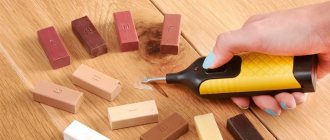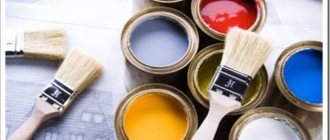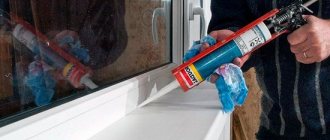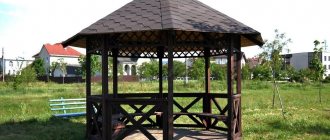How is wood waxed? Currently, many means are used to protect wood from deformation, moisture, scratches, rotting, damage by fungus and various microorganisms.
Wax impregnation not only protects wood from rotting, but also emphasizes its structure and beauty.
The tree also needs protection from solar radiation and exposure to various chemicals. Products for protecting wood give it an excellent appearance, highlighting the structure of the wood, its pattern and natural beauty.
Content:
Various varnishes, paints, and oils are used to impregnate wood. One of the most reliable and proven means of protecting wood is wax. Waxing is one of the most ancient and high-quality methods of wood processing.
Wax improves the decorative functions of wood, emphasizes its texture, and gives the surface a velvety feel. Now the industry produces a wide variety of different wax compositions for application to wooden surfaces and furniture. The material, ready for use, consists of natural wax and various additives, including oils. Tools and materials for wood impregnation. These compositions can be used immediately after opening the package. The composition gives the surface smoothness, shine, and the required shade. It reliably protects wood from destruction and moisture. Any type of wood can be waxed, but it looks best on products made from pine and spruce. Modern industry produces compositions of various colors and shades.
How is wood impregnated with wax?
Materials and tools:
- wax; solvent; carpenter's knife; sandpaper; stiff brush; cloth; brush.
Wood treated with a wax composition retains heat, has excellent moisture-proof properties, and a long service life.
If the surface of the wood is new and was not covered with anything before processing, then processing is performed without preliminary preparation.
If wood that has an old coating is supposed to be impregnated with wax, then the base must be prepared for the waxing procedure.
If the surface of the wood is still new, then no treatment is required before impregnation with wax.
First of all, it is necessary to clean the surface of the wood from the old coating.
If the old coating was varnish or the wood was polished, then it must be cleaned with a solvent. It must be applied several times until the varnish or polish is completely removed.
Then you need to wash off the remnants of the old coating with warm water. If after this there are hard pieces of varnish left, they must be removed with a carpenter's knife, and then these areas should be grouted using sandpaper.
Then, using a stiff brush, remove all remaining thinner and remaining varnish from the cracks of the wooden surface.
After this, you need to wait until the wood dries.
Then you need to clean the surface with sandpaper. If there are exfoliated wood fibers, they are cut off with a carpenter's knife in the direction of the fibers, and then cleaned with sandpaper.
Then, using a stiff brush, remove small remains of wood.
After the preparatory work, the surface of the wood should become even and smooth.
Waxing technology
Wax is an environmentally friendly and inexpensive replacement for enamels and wood varnishes.
Wax is evenly applied to the prepared smooth, dry surface. Impregnation with wax is carried out using a piece of cloth, since it does not have lint.
First, carefully process all flat areas of the tree. Then the product is applied to corners, crevices, profiles, and decorative elements.
This work is done using a small brush or toothbrush.
Impregnation of wood with wax is carried out along the direction of the fibers.
After impregnating the entire area with wax, you need to wait one hour for it to be completely absorbed. Then the excess product is carefully removed with a soft cloth.
The composition should cover the entire surface of the wood, fill all the cracks, pores, and hard-to-reach areas.
Wax impregnation gives wood strength, moisture resistance and durability.
If it is necessary to obtain additional shine, then the entire area must be re-treated. In this case, only part of the composition will be absorbed.
An additional layer is necessary to form a special film, which must be polished with a stiff brush.
Errors and their correction
Errors may occur when performing any work. When waxing, they can be noticed before the layer hardens or after - then the correction options differ.
When the layer has not yet hardened, it can be corrected. If applied unevenly, remove excess with a damp, clean cloth for natural compositions, soaked in solvent for synthetic compositions.
If the wax has hardened, the area is heated with a hairdryer, and the cloth is moistened with hot water or solvent. You can try to remove the excess.
If the layer in a certain place does not shine well, it can be rubbed with a sanding machine with a fur disc.
Once hardened, it is difficult to correct the defect unnoticed.
Before work, you need to study reviews and recommendations of masters. Many professionals note the benefits of wax. The walls look elegant, much more attractive. Any room can be transformed beyond recognition thanks to shades and texture.
Wall after coating
The surfaces do not deteriorate even under the influence of high humidity; they are easy to care for.
If part of the finish is damaged, it will not be possible to restore the original version. The restoration will change the shade compared to the general one, and the coating will have to be completely changed.
Use of waxed products
Wooden surfaces treated with a wax composition are indispensable for children's rooms, bathhouses, and residential premises, which are subject to increased environmental safety requirements.
Precautions must be taken when using such products.
Surfaces coated with the composition do not tolerate high temperatures. When heated, the wax coating floats and breaks down.
Therefore, it is not recommended to use waxing for wooden surfaces located in the kitchen. It is necessary to protect the surface of furniture treated with the composition from heating, and do not place dishes with hot food on it.
If you take the necessary precautions, wood coated with wax can be used for a long time, as it is highly durable, environmentally friendly and durable.
Similar articles
How is wood waxed? Currently, many means are used to protect wood from deformation, moisture, scratches, rotting, damage by fungus and various microorganisms.
Wax impregnation not only protects wood from rotting, but also emphasizes its structure and beauty.
The tree also needs protection from solar radiation and exposure to various chemicals. Products for protecting wood give it an excellent appearance, highlighting the structure of the wood, its pattern and natural beauty.
Various varnishes, paints, and oils are used to impregnate wood. One of the most reliable and proven means for protecting wood is wax.
Waxing is one of the most ancient and high-quality methods of wood processing. Wax improves the decorative functions of wood, emphasizes its texture, and gives the surface a velvety feel.
Now the industry produces a wide variety of different wax compositions for application to wooden surfaces and furniture.
The ready-to-use material consists of natural wax and various additives, including oils.
Tools and materials for wood impregnation.
These formulations can be used immediately after opening the package.
The composition gives the surface smoothness, shine, and the necessary shade. It reliably protects the tree from destruction and moisture. Any type of wood can be waxed, but it looks best on products made from pine and spruce.
Modern industry produces compositions of various colors and shades.
Damage Prevention
Finally, I would like to give some tips to prevent deformation and damage:
- Carrying out regular cleaning is a guarantee that sand and dust cannot accumulate, which can negatively affect the coating during heavy traffic on it.
- It is recommended to clean up spilled liquid immediately.
- Use soft pads for the legs of large furniture not only if you plan to move them, but also if they are in a static position. It is advisable to equip the legs of chairs and tables with rubber or fabric pads.
- You cannot walk on the floor in heels.
- When entering the room, lay down a carpet to prevent the spread of sand and dust particles.
By following these simple rules, you can avoid even minor repairs and enjoy high-quality and durable flooring for a long time.
To learn how to protect laminate joints from moisture, see the following video.
How is wood impregnated with wax?
Materials and tools:
- wax; solvent; carpenter's knife; sandpaper; stiff brush; cloth; brush.
Wood treated with a wax composition retains heat, has excellent moisture-proof properties, and a long service life.
If the surface of the wood is new and was not covered with anything before processing, then processing is performed without preliminary preparation.
If wood that has an old coating is supposed to be impregnated with wax, then the base must be prepared for the waxing procedure.
If the surface of the wood is still new, no treatment is required before impregnation with wax.
First of all, it is necessary to clean the surface of the wood from the old coating.
If the old coating was varnish or the wood was polished, then it must be cleaned with a solvent. It must be applied several times until the varnish or polish is completely removed.
Then you need to wash off the remnants of the old coating with warm water. If after this there are hard pieces of varnish left, they must be removed with a carpenter's knife, and then these areas should be grouted using sandpaper.
Then, using a stiff brush, remove all remaining thinner and remaining varnish from the cracks of the wooden surface.
After this, you need to wait until the wood dries.
Then you need to clean the surface with sandpaper. If there are exfoliated wood fibers, they are cut off with a carpenter's knife in the direction of the fibers, and then cleaned with sandpaper.
Then, using a stiff brush, remove small remains of wood.
After the preparatory work, the surface of the wood should become even and smooth.
Cost and quality
The price of ready-to-use wax depends on a number of factors. First of all, the cost is influenced by the manufacturer’s brand, the popularity of the product; you will also have to pay for the name. The next factor affecting costs is the surface area being treated. Taking this parameter into account, approximately a mixture of 50 to 69 g/m² is required.
The average cost of wax is 5 thousand rubles. For domestic material you will have to pay about 440 rubles. A product designed for Venetian plaster will be a little more expensive, especially if it contains synthetic components. The highest prices are for mixtures made from natural materials and also imported. For them you will have to pay an amount several times higher than the cost of domestic building materials.
Waxing technology
Wax is an environmentally friendly and inexpensive replacement for enamels and wood varnishes.
Wax is evenly applied to the prepared smooth, dry surface. Impregnation with wax is carried out using a piece of cloth, since it does not have lint.
First, carefully process all flat areas of the tree. Then the product is applied to corners, crevices, profiles, and decorative elements.
This work is done using a small brush or toothbrush.
Impregnation of wood with wax is carried out along the direction of the fibers.
After impregnating the entire area with wax, you need to wait one hour for it to be completely absorbed. Then the excess product is carefully removed with a soft cloth.
The composition should cover the entire surface of the wood, fill all the cracks, pores, and hard-to-reach areas.
Wax impregnation gives wood strength, moisture resistance and durability.
If it is necessary to obtain additional shine, then the entire area must be re-treated. In this case, only part of the composition will be absorbed.
An additional layer is necessary to form a special film, which must be polished with a stiff brush.
Use of waxed products
Wooden surfaces treated with a wax composition are indispensable for children's rooms, bathhouses, and residential premises, which are subject to increased environmental safety requirements.
Precautions must be taken when using such products.
Surfaces coated with the composition do not tolerate high temperatures. When heated, the wax coating floats and breaks down.
Therefore, it is not recommended to use waxing on wooden surfaces located in the kitchen. It is necessary to protect the surface of furniture treated with the composition from heating, and do not place dishes with hot food on it.
If you take the necessary precautions, wood coated with wax can be used for a long time, as it is highly durable, environmentally friendly and durable.
How is wood waxed? Currently, many means are used to protect wood from deformation, moisture, scratches, rotting, damage by fungus and various microorganisms.
Wax impregnation not only protects wood from rotting, but also emphasizes its structure and beauty.
The tree also needs protection from solar radiation and exposure to various chemicals. Products for protecting wood give it an excellent appearance, highlighting the structure of the wood, its pattern and natural beauty.
Various varnishes, paints, and oils are used to impregnate wood. One of the most reliable and proven means for protecting wood is wax.
Waxing is one of the most ancient and high-quality methods of wood processing. Wax improves the decorative functions of wood, emphasizes its texture, and gives the surface a velvety feel.
Now the industry produces a wide variety of different wax compositions for application to wooden surfaces and furniture.
The ready-to-use material consists of natural wax and various additives, including oils.
Tools and materials for wood impregnation.
These formulations can be used immediately after opening the package.
The composition gives the surface smoothness, shine, and the necessary shade. It reliably protects the tree from destruction and moisture. Any type of wood can be waxed, but it looks best on products made from pine and spruce.
Modern industry produces compositions of various colors and shades.
Wax and stone
Wax paints have been known since the times of ancient Egypt: these are the paintings of temples and palaces that have survived to this day. About 2 thousand years BC. e. In China, wall paintings (encaustic) used wax compounds that were varnished.
A thin layer of beeswax was applied to marble sculptures to protect against moisture.
Natural wax can be used for walls that are not exposed to external influences - only in the interior.
As follows from the history of encaustic painting, paintings with wax paints that were applied to a heated surface turned out to be the most durable. Following ancient technology, to create a protective layer, it is recommended to apply molten wax to a heated base, which can be natural stone, brick and plastered surfaces.
How is wood impregnated with wax?
Materials and tools:
- wax; solvent; carpenter's knife; sandpaper; stiff brush; cloth; brush.
Wood treated with a wax composition retains heat, has excellent moisture-proof properties, and a long service life.
If the surface of the wood is new and was not covered with anything before processing, then processing is performed without preliminary preparation.
If wood that has an old coating is supposed to be impregnated with wax, then the base must be prepared for the waxing procedure.
If the surface of the wood is still new, no treatment is required before impregnation with wax.
First of all, it is necessary to clean the surface of the wood from the old coating.
If the old coating was varnish or the wood was polished, then it must be cleaned with a solvent. It must be applied several times until the varnish or polish is completely removed.
Then you need to wash off the remnants of the old coating with warm water. If after this there are hard pieces of varnish left, they must be removed with a carpenter's knife, and then these areas should be grouted using sandpaper.
Then, using a stiff brush, remove all remaining thinner and remaining varnish from the cracks of the wooden surface.
After this, you need to wait until the wood dries.
Then you need to clean the surface with sandpaper. If there are exfoliated wood fibers, they are cut off with a carpenter's knife in the direction of the fibers, and then cleaned with sandpaper.
Then, using a stiff brush, remove small remains of wood.
After the preparatory work, the surface of the wood should become even and smooth.
Waxing technology
Wax is an environmentally friendly and inexpensive replacement for enamels and wood varnishes.
Wax is evenly applied to the prepared smooth, dry surface. Impregnation with wax is carried out using a piece of cloth, since it does not have lint.
First, carefully process all flat areas of the tree. Then the product is applied to corners, crevices, profiles, and decorative elements.
This work is done using a small brush or toothbrush.
Impregnation of wood with wax is carried out along the direction of the fibers.
After impregnating the entire area with wax, you need to wait one hour for it to be completely absorbed. Then the excess product is carefully removed with a soft cloth.
The composition should cover the entire surface of the wood, fill all the cracks, pores, and hard-to-reach areas.
Wax impregnation gives wood strength, moisture resistance and durability.
If it is necessary to obtain additional shine, then the entire area must be re-treated. In this case, only part of the composition will be absorbed.
An additional layer is necessary to form a special film, which must be polished with a stiff brush.
Use of waxed products
Wooden surfaces treated with a wax composition are indispensable for children's rooms, bathhouses, and residential premises, which are subject to increased environmental safety requirements.
Precautions must be taken when using such products.
Surfaces coated with the composition do not tolerate high temperatures. When heated, the wax coating floats and breaks down.
Therefore, it is not recommended to use waxing on wooden surfaces located in the kitchen. It is necessary to protect the surface of furniture treated with the composition from heating, and do not place dishes with hot food on it.
If you take the necessary precautions, wood coated with wax can be used for a long time, as it is highly durable, environmentally friendly and durable.
From this article you will learn:
- What is included in wax for woodworking Why do you need wax for woodworking How to prepare for woodworking wax How to apply wood wax correctly
Wood is a unique building material that man has used throughout his history. However, in order for wood to retain its qualities longer, it needs processing and protection. For this, different materials are used, for example, wax for wood processing.
What is the material
Everyone is familiar with beeswax. It is used in a variety of fields, from cosmetics to construction.
This substance has a number of useful properties:
- is a natural substance with a fairly high density;
- does not dissolve upon contact with water, acids and alcohols;
- melts at a temperature of about +68ºC;
- When heated, the material becomes plastic.
Before use, the substance is melted to eliminate foreign impurities and natural inclusions.
Wax, when applied to plaster, creates a very interesting effect, adding shine and at the same time aging the coating. The substance seems to tint the surface. After its application, a thin layer of film is formed on the material, and it will be impossible to change the plaster underneath without damaging the coating, so the choice of wax must be carefully approached.
Composition of natural wax in%:
- fatty acids - 14;
- alkanes - from 11 to 13;
- polyesters - up to 75;
- high molecular weight alcohols - from 1 to 1.25.
What is included in wood wax?
Wood wax is a decorative finishing coating. It is used applied to pure wood or in combination with other materials. On the one hand, wax prevents the penetration of excess moisture into the structure of the tree and protects it from mold, rot, and damage by insects, and on the other hand, it performs decorative functions.
When covering a wooden surface, it highlights its texture, makes it smoother, adds a slight shine and a velvety tint. Dark wax compositions are usually used in restoration, as well as to imitate antiques.
Compositions for treating wood with wax are produced in various consistencies.
Small surfaces are treated with special wax pastes; for large rooms, liquid compositions are used. There are also soft and hard restoration wax. It is used as a means to seal cracks and chips.
Wax pastes consist of three main components:
- beeswax or paraffin, which creates a soft elastic consistency that improves the polishing process; carnauba wax, which gives the finish strength and adds shine; solvent - it is necessary to give the composition optimal thickness.
Kinds
When using wax on Venetian plaster, the basic scale of finishing is specified. The finishing layer is:
- transparent;
- colored;
- with different inclusions.
The transparent composition helps to emphasize the texture of the finish. After processing, a glossy shine appears and looks good on a natural stone surface.
Colored wax gives the treated base an additional shade. You can adjust the main color when it turns out not to be as successful as expected. Golden, silvery shades are used for gilding, metallic effect - suitable for medieval styles. You can add construction gold, bronze, or silver powder to regular wax to give the surface original highlights.
There are two types of compositions for walls in accordance with the criteria - thickness and composition:
- Gel or liquid consistency. Liquid mixtures are used for more porous materials. They are well distributed over uneven surfaces, fill voids, and create protection. Gel wax is thicker and is used for smooth walls, for example under stone. It is not so easy to apply, but the stone finish begins to shine like a mirror, like polished marble.
- Natural or synthetic composition. Wax with natural ingredients is usually a beekeeping product with good properties - safety, absence of harmful impurities, beautiful shine. Synthetic masses are produced industrially; compared to natural ones, they are more resistant to moisture and temperature fluctuations, the service life is longer, and a dense impermeable layer with a matte effect is formed on the surface. The synthetic composition is better combined with structural surfaces.
The varnish must be moisture resistant and vapor permeable. Drying time – 3 hours. Varnishes can be matte, glossy, colored, or with a metallic sheen.
Natural wax
What to replace
The plaster should not be left completely without a final coating, especially in a room with high humidity. The finish will not have the necessary protection.
When wax has to be abandoned, it is replaced with varnish. It plays a similar role - it preserves the attractiveness of the finish longer and adds shine. Acrylic or water-based compositions are suitable for plaster. They are environmentally friendly and are used for work inside buildings.
Why do you need wax for wood treatment?
Currently, many different methods are used to protect wooden surfaces from mechanical damage, pests and the destructive effects of the environment, including solar radiation and chemicals.
Various varnishes, paints, and oils are used to impregnate wood. One of the most reliable and popular means of protection is wax impregnation, which not only protects wood, but also emphasizes its structure and beauty. Waxing is one of the most ancient and high-quality methods of processing wooden products.
Wax is an environmentally friendly material. It is absolutely safe for health. Wood coated with this material looks more expressive and brighter. It darkens a little and, at the same time, acquires a very noble golden hue.
In addition, unlike a varnished surface, a waxed surface “breathes”, and the wood itself has an excellent smell. Nowadays, the industry produces many types of wax compositions for coating wooden surfaces and furniture. Ready-to-use mixtures include natural wax and various additives, such as oils. They can be used immediately after opening the package. Any type of wood can be waxed, but it looks best on items made from pine and spruce.
Wax for wood processing has a rich color palette.
Its different color tones can be mixed with each other. Dark compositions can easily be made lighter by adding colorless wax to them. If you apply a colorless varnish to an existing coating, this will increase the thickness of the layer without changing its color. To prevent the top fibers of the wood from swelling during processing, the wax should be slightly diluted with undiluted white spirit.
How does wood wax differ from oil?
As previously noted, waxing wood can be done either using wax paste or using linseed oil with wax. Oil, when applied to the surface, deeply saturates the wood without changing its natural texture. Wax forms a film at the treatment site that protects the product from abrasion and damage.
Wax for treating wood with linseed oil protects wood from rotting and drying out. To protect furniture located outdoors, you should use a special oil-wax for wood.
Waxing is a reliable method of protecting wood surfaces. In addition, it is inexpensive, which allows it to be widely used.
Wax impregnations are environmentally friendly and safe, as well as water-repellent properties. If required, you can change the shades or even the color of the coating.
How to properly use wax on joints and lock joints?
Laminate should be classified as a floor with increased strength, but we should not forget that due to its active regular use, the original characteristics are significantly lost. The “Achilles heel” of these products is the joints, made like a lock; based on this axiom, we can conclude that the protection of the coating must be renewed even at the pre-assembly stage - it is necessary to treat the surfaces with wax without protection.
You can also use joint gel. Of course, there is even a wax-impregnated product on the market, but the cost of such a solution is much higher than the proposed option. In addition, to prevent moisture from penetrating under the cladding after installation, it is necessary to lubricate the seams of the panel joints.
Protection release forms range from liquid to paste. The choice of tool should be based on the conditions and tools for the job, as well as the purpose of its use. In cases where the release form is liquid, it is better to use a brush; in order to evenly distribute the protection over the entire area of the lock connection, excess material deposited on the front side of the product should be removed using one torn one. After all installation work, the measures taken will help prevent liquid from entering the locking spaces.
When purchasing a paste preparation, it must be used immediately before installation. The contents of the dough are squeezed onto the lock, which requires processing, after which the laminate is assembled.
Excess material coming out of the seams is left untouched until completely dry, and then, without applying excessive force, is removed with a rubber spatula. After the described procedure, the surface should be polished.
There are common situations where wax is used to fill the seams. These actions are performed when it is necessary to obtain an airtight coating to completely waterproof the joints, as well as the back surface of the laminate. To avoid damaging the front part, it is recommended to seal the part of the panel adjacent to the joint. Next, you need to apply the substance to the seam and remove the excess. After the product has dried, remove the tape and thoroughly polish the surface.
How to make wax for wood processing with your own hands
Wax paste can be quickly prepared at home. Place beeswax in a metal container and melt it in a water bath. To 30% of the melted material, add 20% drying oil and 50% turpentine oil.
After thoroughly mixing the ingredients, the mixture must be cooled until it hardens. Then it is rubbed on wooden surfaces, parquet, etc.
How to prepare for waxing wood
Before you start waxing, the surface of the wood must be prepared. First, all the indentations on it are eliminated. Next, grinding is carried out with a fine-grained abrasive, the dust is removed with a wiping cloth.
If you want to apply wax to a surface that has previously been coated in some way, then the old layers must be removed.
To remove varnish, it is allowed to use a solvent. The previous coating must be completely removed until natural wood appears.
The old coating is removed with warm water using abrasive materials.
All small patches of varnish remaining after cleaning are removed with a knife or blade. The cleaned surface is thoroughly sanded and dust is removed. Before applying wax to treat wood, the board must be thoroughly dried and sanded.
A flat, dry and smooth surface of the wood indicates that its preparation for waxing has been carried out correctly. Note that waxing old antique furniture and other wooden items perfectly protects them from damage. The wax composition can be used to cover both unpainted and varnished surfaces.
How can I delete
Removal of the layer is required if there are serious defects and the need for periodic renewal of the coating. The complexity of the work depends on what stage the wax is at. If it has not yet hardened, you can remove it on your own.
The soft coating is washed off with a cloth soaked in hot water. Hardened wax can be removed using white spirit solvent. It removes soil compounds from the tree. Before starting cleaning, the method is tested on an inconspicuous area of the wall in the corner below. It is not recommended to work with a large area at once. Make sure that the solvent does not affect the base coat of the surface.
Warm water and cloth treatments are more commonly used for acrylic products. If you remove part of the natural wax or material with the addition of natural components in this way, the surface will stand out after re-application.
Treated walls cannot be washed earlier than 14 days! As a last resort, do not use aggressive detergents.
Wax is removed from Venice in another way. To do this, use fine-grained sandpaper. It is important to remove the film evenly from the entire surface. Then you should remove small particles and any dust that appears. The wall is immediately re-treated, glossed and waxed.
How wood is treated with wax
Wax pastes are a type of polishing material and, as a rule, they contain beeswax. Sold in steel cans.
To apply the paste to wooden surfaces, it is recommended to use a special swab. However, you can use a thick brush or a dishwashing sponge. Wax paste is a wonderful finishing material that can be applied to other coatings after they have been impregnated with oil.
Liquid wax for wood treatment is applied with a brush and used when treating surfaces with a large area, for example, these can be massive panels. The flooring composition has a transparent base. It is used in difficult operating conditions.
Wax impregnation products are available in various colors and shades.
Dark colors are mainly used for restoration work. Their task is to hide minor scratches and defects. The most common formulations are clear or yellow in color.
For finishing oak, impregnations in brown and black shades are used. This allows the wood to show its texture more fully. Cedar or pine, as a rule, is coated with golden impregnations, and in order to give freshness to mahogany, red mastics are selected.
By superimposing one composition on another it is possible to achieve a smooth transition of tones. Objects that often come into contact with clothing, for example, chairs or tables, are usually not coated with paints, oils and wax.
- The process of treating wood with wax.
In order to evenly apply the wax paste, special tampons are used. Several layers of the composition are applied to the surface in a circular motion. After the first layer, the surface is rubbed along the wood fibers.
A few minutes later, a second one is applied, and the surface is rubbed across the wood fibers. If difficulties arise with grouting, the paste should be heated. After applying both layers of the surface, give about a day for the solvent vapor to completely evaporate.
Then the surface is covered with wax several more times and completely dried. And finally, at the last stage, polish the coating with a soft cloth to the level you require. With sufficiently long polishing you can even achieve a mirror effect.
- Features of wood processing with wax.
Waxing is an ancient type of wood processing, considered one of the most noble. Under the influence of beeswax, the wood becomes unusually beautiful, smooth and soft. Wax, when applied to a wooden surface, highlights its natural texture, adds a slight shine, a noble yellowish tint can be seen on the surface, and the board exudes a fresh natural aroma.
Some craftsmen diligently polish the waxed surface to a mirror shine.
Nowadays, a variety of compositions for treating wood with wax are on sale. Among them you can find, for example, oleoresin wax, used in liquid form with the addition of a solvent. It is based on beeswax, pine (cedar) resin and orange oil.
When treating large areas with wax, such as floors, chemical solvents are added to solid formulations. However, after mechanical tools (irons) appeared, solid compounds can be used without dissolving them using chemicals.
Today on the building materials market you can find earth-colored wood wax. It must be used carefully, since the layer may lie unevenly, and this will not be easy to correct. To change the color of the coating, you should not use earthen paint; it is preferable to saturate the wood with a stain of the appropriate color rather than with oil.
Another useful property of waxed coatings is that they do not accumulate static electricity and, therefore, do not attract dust. It has also been noted that waxed surfaces have a beneficial effect on the emotional and physical state of a person and create a comfortable atmosphere in the room.
By repeating the impregnation procedure several times in a row, each time you increase the amount of wax per unit area of the wooden surface. Thus, you get the opportunity to control this parameter at your discretion.
Compositions for treating wood with wax may include several types of wax. Among the most famous types we will name beeswax or carnauba wax, resin. There are special artificial products created from petroleum components; they contain chemical solvents without an oil base.
Use for external and internal work
Wax is considered the best coating for decorating and protecting wood. The appearance of the tree improves and its quality characteristics are enhanced, which prolongs its life. Its different types are designed for indoor or outdoor work.
For outdoor wood treatments, wax is often combined with oil. They decorate and protect the facades of wooden housing constructions, gazebos, fences, small architectural forms and much more. Waxing the outside helps the wood resist environmental negativity, temperature fluctuations, UV rays of the sun, and high humidity. The level of surface resistance to water increases.
Wax consists of organic elements, which allows it to be used for finishing wooden products inside house buildings. It is possible to use it in children's rooms and bedrooms. Interior items made of wood retain their appearance for 5 years after treatment. A protective wax coating for the wood is formed that is velvety and pleasant to the touch.
The nature of damage to wood affects the choice of material type. Deep chips are treated with a solid compound, small defects are covered with 1-2 layers of liquid material. The shine of the parquet will return after two coatings in liquid form.
For small damage, it is convenient to purchase a wax pencil. This is an “ambulance” for removing minor scratches. To eliminate damage over large areas, restoration material is purchased in bulk containers.











